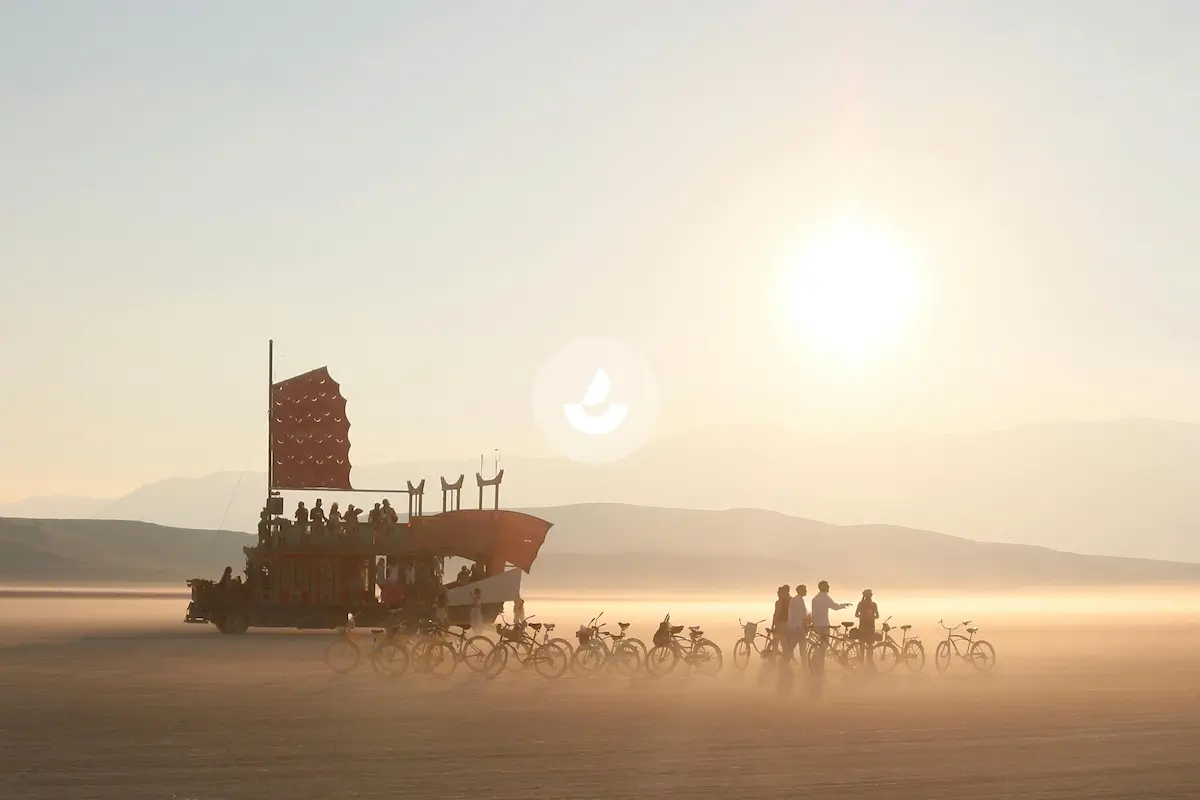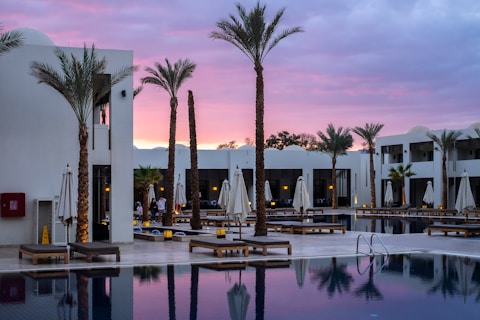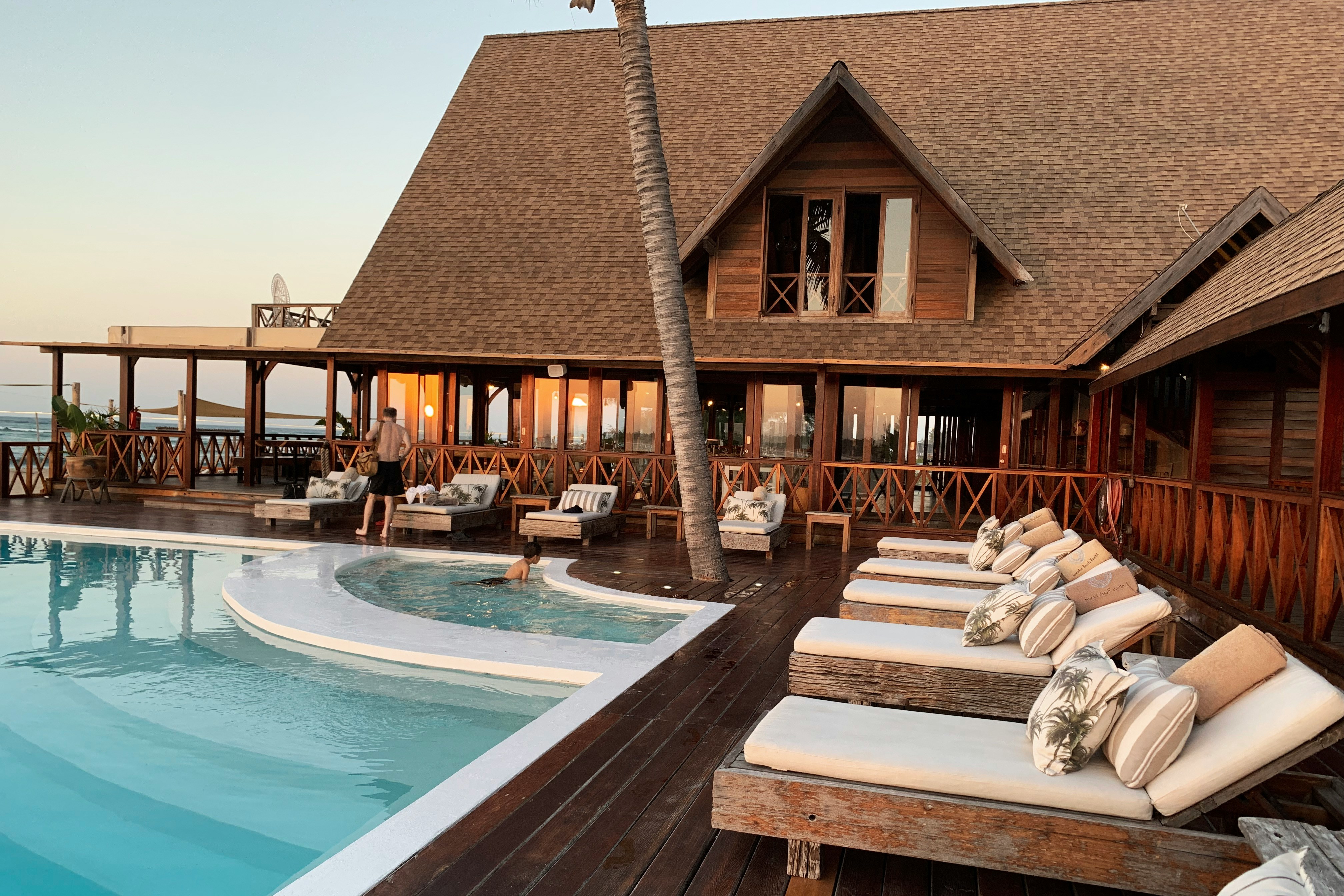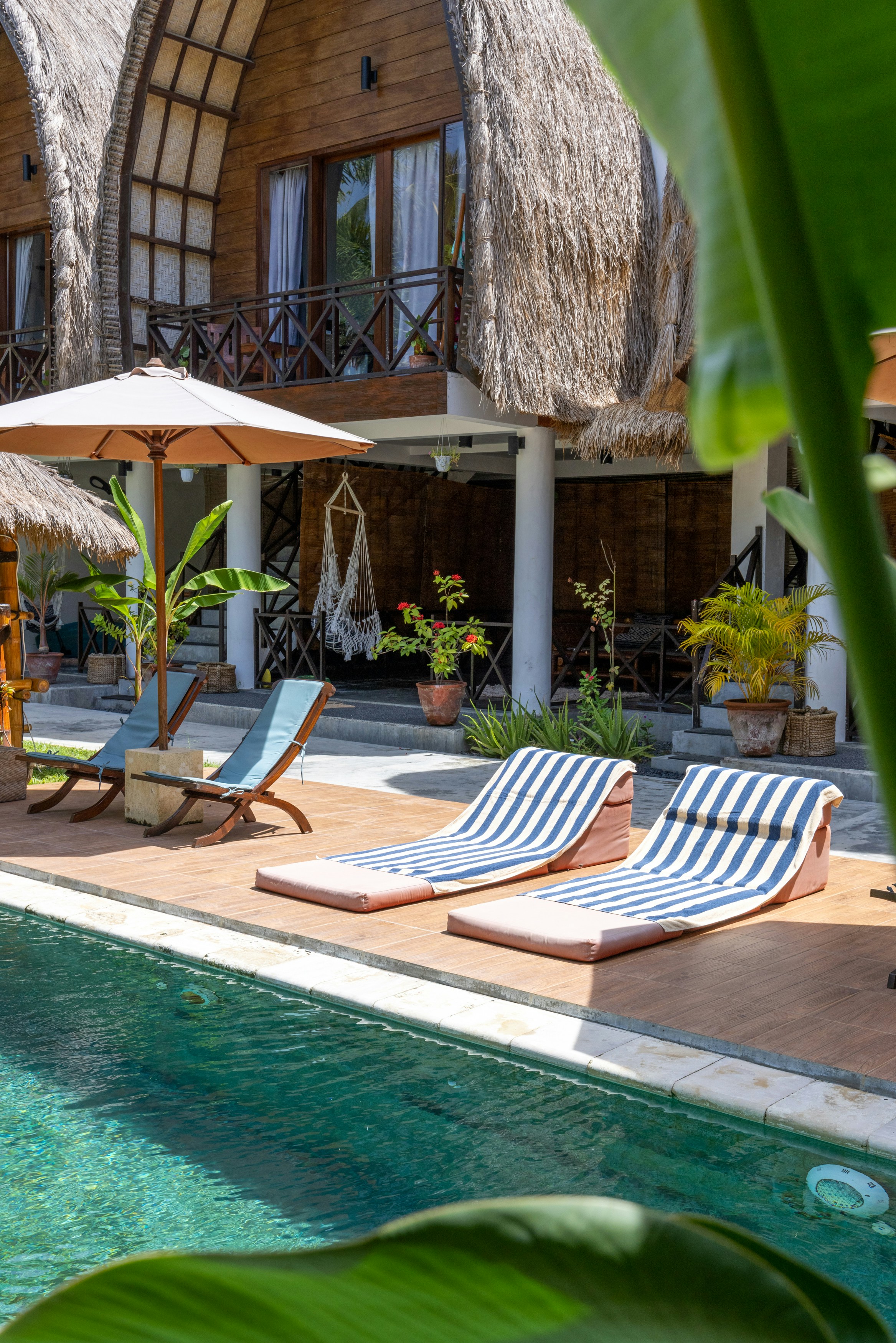Jame' Mosque of Isfahan
Jame' Mosque of Isfahan things to do, attractions, restaurants, events info and trip planning
Plan your stay
Posts
【Iran Travel Notes 】Isfahan Jameh Mosque 🕌✨
Emily JohnsonEmily Johnson
402
Masjid-e-Jāmeh Isfahān (مسجد جامع اصفهان), also known as the Friday Mosque (مسجد جمعه) or the Masjid Jameh Atiq (مسجد جامع عتیق), is the grand, congregational mosque (Jāmeh) of Isfahān city, within Isfahān Province, Iran. The mosque is the result of continual construction, reconstruction, additions and renovations on the site from around 771 to the end of the 20th century. This is one of the oldest mosques still standing in Iran, and it was built in the four-iwan architectural style, placing four gates face to face. The mosque’s core structure dates primarily from the 11th century when the Seljuk Turks established Isfahan as their capital. Ablution fountain can be seen in the foreground. Under the reign of Malik Shah I (ruled 1072-1092) and his immediate successors, the mosque grew to its current four-iwan design. The mosque has been a UNESCO World Heritage Site since 2012. Built during the Umayyad dynasty, it is rumored in Isfahan that one of the pillars of this Mosque were personally built by the Caliph in Damascus. Prior to it becoming a Mosque, it is said to have been a house of worship for Zoroastrians. Responding to functional needs of the space, political ambition, religious developments, and changes in taste, over the centuries additions and modifications took place incorporating elements from the Mongols, Muzzafarids, Timurids and Safavids. Of the most note is the elaborately carved stucco mihrab commissioned in 1310 by Mongol ruler Oljaytu, located in a side prayer hall built within the western arcade. This part of a building is named Oljaytu Mosque. The exquisite stucco mihrab is adorned with dense Quranic inscriptions and floral designs. This domed interior was reserved for the use of the ruler and gives access to the main mihrab of the mosque. The cupolas and piers that form the hypostyle area between the iwans are undated and varied in style, endlessly modified with repairs, reconstructions and additions. Dome soffits (undersides) are crafted in varied geometric designs (inspect) and often include an oculus, a circular opening to the sky. Vaults, sometimes ribbed, offer lighting and ventilation to an otherwise dark space. The qibla iwan on the southern side of the mosque was vaulted with muqarnas during the 13th century. The qibla iwan is the only one flanked by two cylindrical minarets. Iwans were also added in stages under the Seljuqs, giving the mosque its current four-iwan form, a type which subsequently became prevalent in Iran and the rest of the Islamic world. Safavid intervention was largely decorative, with the addition of muqarnas, glazed tilework, and minarets flanking the south Qibla iwan. Linking the four iwans at the center is a large courtyard open to the air, which provides a tranquil space from the hustle and bustle of the city. Brick piers and columns support the roofing system and allow prayer halls to extend away from this central courtyard on each side. The roof of the mosque is a panoply of unusual but charming domes crowning its hypostyle interior.
Jalal Mohamed H M S (Mohammed Jalal)Jalal Mohamed H M S (Mohammed Jalal)
90
Dear Friends, I warmly invite you to explore the stunning Jameh Mosque of Isfahan, a true gem that showcases the rich history and architectural brilliance of our city. This mosque, a UNESCO World Heritage site, is one of the oldest and most significant mosques in Iran, reflecting various styles from the early Islamic period to the Safavid era. As you enter, you'll be greeted by the majestic courtyard and the beautiful iwan, adorned with intricate tile work that tells stories of faith and artistry. The grandeur of the mosque, combined with its meticulously designed arches and domes, creates an atmosphere filled with spirituality and tranquility. Don’t miss the stunning blue tiles that shimmer in the sunlight, adding an enchanting beauty to the prayers and moments of reflection that take place here. The mosque's historical significance and architectural finesse will surely leave you in awe. Visiting the Jameh Mosque is more than just seeing a beautiful building—it's an opportunity to connect with the vibrant culture and heritage of Iran. I truly hope you take the time to experience this architectural wonder and feel the serenity it offers. Warm regards, [s.mohammad.e.mortazavi] An Iranian local
Seyed mohammad esmaeil MortazaviSeyed mohammad esmaeil Mortazavi
00
مسجدی به قدمت تاریخ اسلام، میراثی کهن تر از اسلام در ایران مسجدی که در آن هر سلسله و حکومتی از خود یک امضا به یادگاری گذاشته است. مسجدی که رسانه های آن فرش و نقش های روی دیوار و کتیبه های سنگی ( شامل وقف نامه ها و فرمان های حکومتی و توبه نامه) هستند. این مسجد یک میراث فرهنگی ثبت جهانی است که در آن تحولات فکری در جهان بینی اسلامی قابل مشاهده است. مسجدی که در آن رقابت سیاسی دو دانشمند و وزیر به نام های تاج الملک و نظام الملک به زبان هنر و معماری ظهور کرده و توجه ما را به خود جلب می نماید. مسجد جامع اصفهان فقط یک مسجد نیست. بقایایی از یک آتشکده از دوران ساسانی است که در مجاورت محله ی یهودی نشین اصفهان واقع شده است. اینجا از معدود مساجدی است که در قسمت زمستانی آن می توان در تمام فصول سال یک مراقبه ی بی نظیر را تجربه کرد. هرچند که این مسجد از آجرکاری و کاشی کاری ( معرق و هفت رنگ) و گچبری و آثار هنری از جنس چوب غنی و بی نظیر است، اما در آن هیچ آینه کاری ای وجود ندارد. این یعنی در این مسجد اثری از خودتان نمی یابید. بلکه فقط به خدا و خلق خدا می نگرید. این فضای معنوی و روحانی چنان اثری روی بازدیدکنندگان می گذارد که شاه طهماسب صفوی در آن توبه می کند و سر آرتور پوپ آن را برای آرامش ابدی پیکر خویش برمی گزیند. نه آتش سوزی، نه سیل، نه زلزله و نه حتی بمباران نتوانسته اند به هنر و معنویت این مسجد چیره شوند. در کوی عشق جان را باشد خطر اگرچه جایی که عشق باشد، آنجا خطر نباشد به عنوان یک تورلیدر بازدید از این بنای تاریخی عظیم و بی نظیر رو به مدت حداقل ۹۰ دقیقه پیشنهاد می کنم. شما در این مسجد می توانید کتاب راهنمای مسجد را خریداری کنید و یا متناسب با زبان مادریتان از راهنماهای صوتی قابل کرایه در ورودی مسجد استفاده نمایید. بهترین حالت بازدید مسجد، هنگامی است که شما با یک راهنمای مسلط به بازدید بپردازید تا از جزئیات شگفت انگیز هرگوشه ی این شاهکار ایرانی نهایت لذت را ببرید. حس کردن زیبایی این مسجد با روح انسان درک می شود نه با جسم. بنابراین از لمس کردن و دست زدن به دیوارها و کاشی ها و گچبری ها اکیدا خودداری فرمایید. نوشتن یادگاری و آسیب رساندن به مسجد هم در شان هیچ انسان محترمی نیست.
Mohammadreza FarajollahiMohammadreza Farajollahi
50
مسجد جامع اصفهان ابتدا از خشت خام ساخته شدهبود اما به خاطر پایداری آجر، سرعت ساخت بالا و برخی عوامل دیگر، در بازسازی آن از آجر استفاده کردند. طاقهای چشمهای، ایوانهای چهارگانه، سردرها، جرزهای آجری و تزئینات متفاوتی که متناسب با معماری هر دوره از تاریخ ایران و در سبکهای خراسانی (یا عربی) و رازی در این مسجد به کار برده شده، اثری را پدیدآورد که الگویی برای مساجد ایران و حتی مناطق مسلماننشین دیگر محسوب میشود. ضلع شمالی مسجد از ایوان درویش، مدرسهٔ مظفری، گنبد تاجالملک یا گنبد خاکی، چهلستون، شبستان و کتیبههای مختلفی که از دورانهای سلجوقی و صفوی بهجا مانده، تشکیل شدهاست. این کتیبهها با استفاده از گچ و آجر ساخته و با خطهایی چون کوفی، ثلث، نستعلیق و بنایی و آیاتی از قرآن تزئین شدهاند. در ضلع جنوبی مسجد، ضلعی است که ساختمانهای اساسیِ بنا در آن به سبک عربی و به وسیلهٔ خشت خام ساخته شدهاند. در دوران نظامالملک با تخریب شبستان، گنبدی به صورت دوپوسته بنا شد که باعث پوشیده ماندن ترکبندیها بود و گنبد را بزرگتر نشان میداد. در دوران آل مظفر، آق قویونلو و صفویه نیز کتیبههایی به این قسمت اضافه شدند و بنای ضلع جنوبی کمی تغییر کرد. کتیبهٔ شاه طهماسب مبنی بر بخشش مالیات و توبهنامهٔ وی، کتیبهٔ شاه اسماعیل برای صدور حواله به نام افراد اصفهان، کتیبهٔ سنگفرش و کتبیهٔ آب مباح مسجد از جمله آثار موجود در این ضلع است. ضلع غربی، از شبستان زمستانی، مسجد مصلی، مسجد و محراب الجایتو، کتیبههای شاهان صفوی و محمد امین اصفهانی ساخته شدهاست. قسمتی از دیوار این ضلع باقیماندهٔ دیوار خشتی ساخته شده در قرن هشتم هجریست. در میان افرادی که باعث ایجاد تغییراتی در این قسمت بنا شدند میتوان از الجایتو، محمد بن بایسنقر تیموری و شاه سلطان حسین صفوی نام برد. تازهترین قسمت مسجد، ضلع شرقیست که به دوران سلوجوقی تعلق دارد. این قسمت به مرور زمان تخریب و در دوران شاه سلیمان صفوی دوباره ساخته شد و کتیبهای مربوط به این بازسازی نیز در ایوان شرقی وجود دارد. به علاوه، کتیبههایی از دوران هوتکیان، آل مظفر و شاه طهماسب صفوی نیز در این قسمت باقی ماندهاند.
Mehran SabzemeidaniMehran Sabzemeidani
10
This mosque keeps a history of 1000 years so, it is very important and ancient Mosque. Lot of Shiite Muslims around the world comes here to visit it because there is a tomb of Top Shiite Cleric of his era, Allama Majlisi in it. You can see the evolution of Iranian architecture by walking through its different halls. In roofed places, if you look at the dome ceilings you'll see beautiful tile decorations with special styles that each of them is different from the others. It's a big mosque indeed. It is located next to the grand bazaar.
Mr HelperMr Helper
70
Nearby Attractions Of Jame' Mosque of Isfahan
Imam Ali Square
Moshirolmolk historical house
Khajeh Nezam ol Molk Tomb
Imam Ali Mosque
Chehel Dokhtaran
Sarban Minaret
Imam Zadeh Esmaiel
Chehel Dokhtaran
Javaheri Historical House
Darb-e Emam

Imam Ali Square
4.3
(435)Click for details

Moshirolmolk historical house
4.5
(143)Click for details

Khajeh Nezam ol Molk Tomb
4.3
(63)Click for details

Imam Ali Mosque
4.4
(57)Click for details
Nearby Restaurants Of Jame' Mosque of Isfahan
Haaj Mahmoud Shefa'at Beryani

Haaj Mahmoud Shefa'at Beryani
3.9
(270)Click for details
Basic Info
Address
Isfahan Province, Isfahan, Majlesi St, MM9P+V3C, Iran
Map
Phone
+98 31 3445 6400
Call
Website
isfahanjamehmosque.com
Visit
Reviews
Overview
4.7
(528 reviews)
Ratings & Description
cultural
accessibility
Description
The Jāmeh Mosque of Isfahān or Jāme' Mosque of Isfahān, also known as the Atiq Mosque and the Friday Mosque of Isfahān, is a historic congregational mosque of Isfahan, Iran.
attractions: Imam Ali Square, Moshirolmolk historical house, Khajeh Nezam ol Molk Tomb, Imam Ali Mosque, Chehel Dokhtaran, Sarban Minaret, Imam Zadeh Esmaiel, Chehel Dokhtaran, Javaheri Historical House, Darb-e Emam, restaurants: Haaj Mahmoud Shefa'at Beryani

- Please manually select your location for better experience




